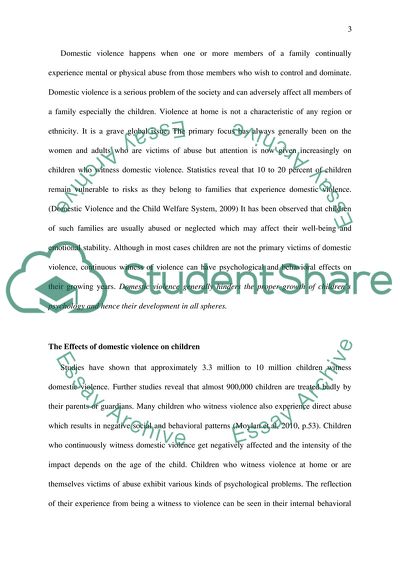Cite this document
(Effects of Domestic Violence on Children Coursework Example | Topics and Well Written Essays - 2000 words, n.d.)
Effects of Domestic Violence on Children Coursework Example | Topics and Well Written Essays - 2000 words. https://studentshare.org/psychology/1775636-domestic-violence-as-a-form-of-child-abuse
Effects of Domestic Violence on Children Coursework Example | Topics and Well Written Essays - 2000 words. https://studentshare.org/psychology/1775636-domestic-violence-as-a-form-of-child-abuse
(Effects of Domestic Violence on Children Coursework Example | Topics and Well Written Essays - 2000 Words)
Effects of Domestic Violence on Children Coursework Example | Topics and Well Written Essays - 2000 Words. https://studentshare.org/psychology/1775636-domestic-violence-as-a-form-of-child-abuse.
Effects of Domestic Violence on Children Coursework Example | Topics and Well Written Essays - 2000 Words. https://studentshare.org/psychology/1775636-domestic-violence-as-a-form-of-child-abuse.
“Effects of Domestic Violence on Children Coursework Example | Topics and Well Written Essays - 2000 Words”. https://studentshare.org/psychology/1775636-domestic-violence-as-a-form-of-child-abuse.


